PHASEOLUS
Phaseolus
L., Sp. Pl. 723. 1753; Gen. Pl. ed.5: 323. 1754; Verdc., Kew Bull. 24: 507-526. 1970; Verde in Milne-Redhead & Polhill, Fl. Trop. E. Afr. (Leguminosae 4) 613. 1971; Wu & Thulin, Fl. China @ eFloras.org 10: 260; Fl. Pak. @ eFloras.org p. 239.
Herbs or shrubs, erect, prostrate or climbing. Leaves stipulate, stipules persistent, not prolonged below the point of insertion; pinnately trifoliate, rarely unifoliate. Inflorescence axillary, falsely racemose, the flowers in fascicles along the rachis; flowers bisexual, zygomorphic, 5-merous, perigynous; bracts and bracteoles present. Calyx 5-lobed, 2-lipped; upper lip emarginate or bifid, lower lip 3-lobed. Corolla 5, papilionaceous; vexillum round, auriculate with 2 appendages or with only slight appendages at side of claw and a transverse constriction above or with none; wings often follow the spiral of keel; keel often narrow, elongated, the apex beaked and forming the spiral of 1-5 complete turns. Stamens 10, diadelphous (9+1), anthers subuliform or 5 dorsifixed alternating with 5 basifixed. Monocarpellary, ovary 2-many-ovuled, placentation marginal; style tenuous below, the upper part cartilaginous and thickened, curved through 360°, the upper portion glabrous or hairy inside; stigma oblique on the inner side of style apex or sometimes terminal or subterminal, not penicillate. Legumes linear or oblong, compressed or subcylindrical, sometimes beaked. Seeds 3-many, oblong or reniform.
86 species
Phaseolus vulgaris
Phaseolus vulgaris
L., Sp. Pl. 723. 1753; Baker in Hook. f., Fl. Brit. Ind. 2: 200. 1879; Cooke, Fl. Bomb. Pres. (Reprint ed.) 1: 403. 1908; Verde. in Milne-Redhead & Polhill, Fl. Trop. E. Afr. (Leguminosae 4) 614. 1971; Fl. China @ eFloras.org 10: 260; Fl. Pak. @ eFloras.org p. 240.
Annual, climber or suberect, stem pubescent to glabrescent. Leaves pinnately trifoliate; petiole 4-5 cm long, base pulvinate; leaflets 4.5-15 cm long, 2.5-6.5 cm broad, ovate to ovate-rhombic, acuminate, lateral leaflets oblique; 3 basal nerves in leaflets, leaflets glabrous except hairy margin. Petiolules 2-3 mm, pubescent; stipels ca. 2 mm long, linear-lanceolate. Inflorescence axillary, falsely racemose, flowers in fascicles along the rachis, 1-3-flowered, peduncle 0-5 cm long. Bracts 3 mm x 2.5 mm, ovate; bracteoles 2, 4-5 mm long, green. Flowers bisexual, zygomorphic, 5-merous, perigynous, ca. 1.3 cm long, white or pale white tinged with pink or purple; pedicel ca. 3 mm long. Calyx cupulate, pubescent; tube 2-3 mm long; teeth 5, 1 mm long, upper 2 joined to form an emarginate lip. Corolla papilionaceous, pale white tinged with purple or pink; vexillum 9 mm x 9 mm, glabrous, auriculate with 2 slight appendages at the side of claw; wings 1.3 cm long, obovate, clawed; keel 2.2 cm long, 1+ spirally twisted or curved, clawed. Stamens 10, diadelphous (9+1), vexillary stamen free, with an appendage near the base; staminal sheath ca. 10 mm long; all anthers uniform. Ovary 5 mm long, shortly stipitate, unilocular with 2-6 ovules, curved and pubescent, placentation marginal; style tenuous below, upper part cartilaginous and thickened, curved through 360°, upper portion hairy inside; stigma oblique on inner side of style apex. Legumes 10-15 cm long, 1-1.3 cm broad, linear-lanceolate, beaked, pubescent or glabrous, 5-12 seeded. Seeds white, brown or variegated, oblong or reniform, 0.9-2 cm x 0.3- 1.2 cm.
Common Names: : Common Bean, French Beans, Kidney Beans; Bakla, Rajmah (Hindi)
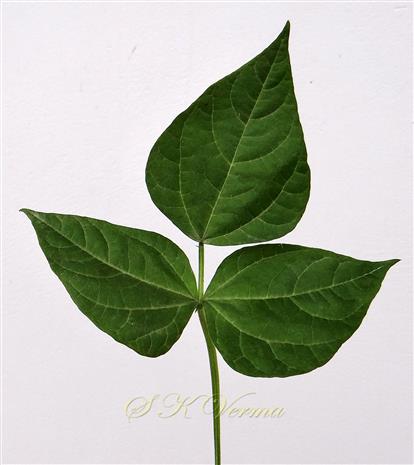
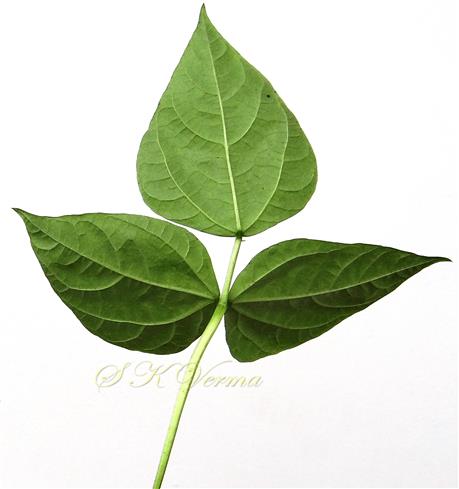
-DSC09744.jpg)
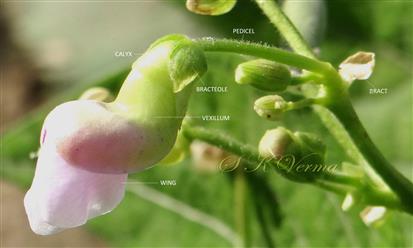
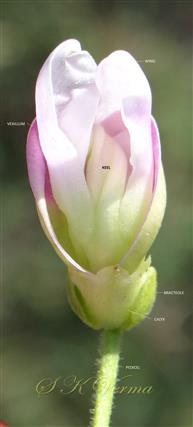
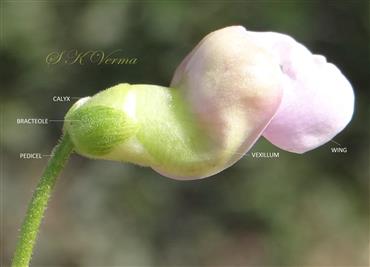

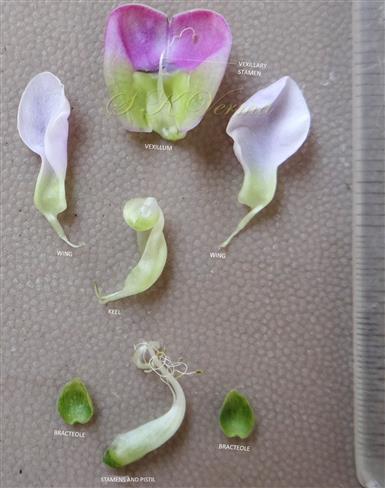
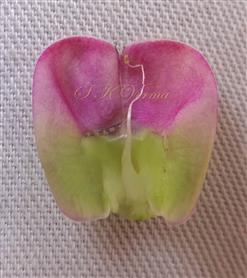
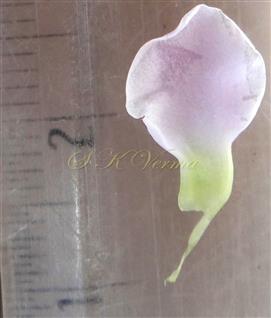

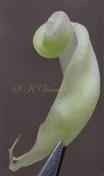
.jpg)
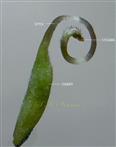
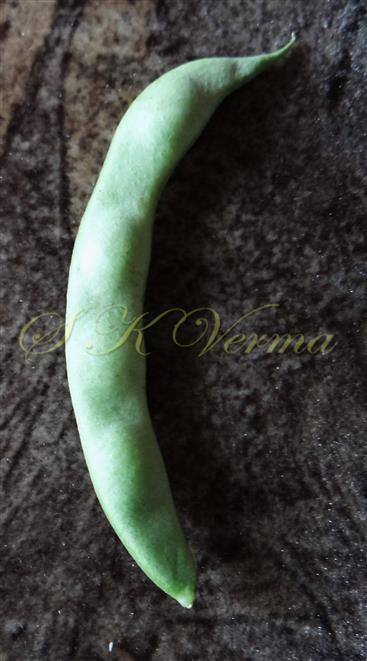
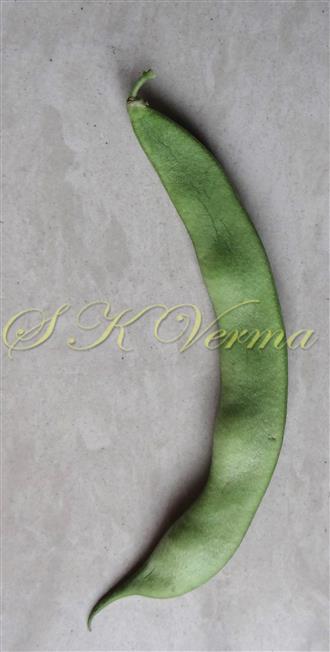



-DSC09744.jpg)



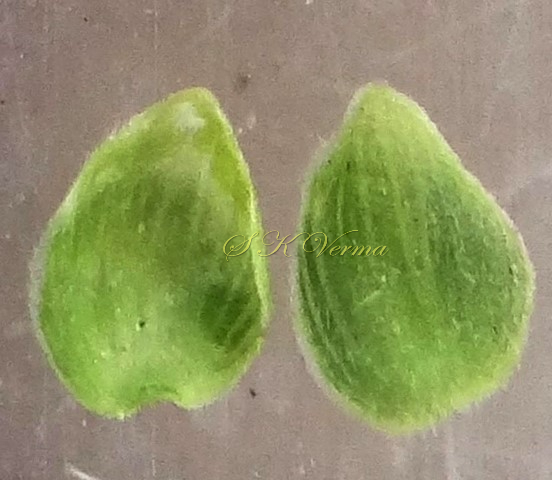



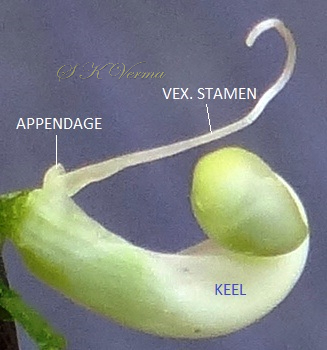

.jpg)


